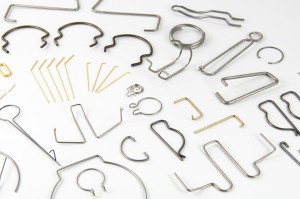1. Official Launch of Business Radio
 This week is the official launch of Business Radio Powered by The Wharton School. We’re on Channel 111 on the SiriusXM satellite radio network. My show is on Wednesdays 7-9pm ET. (My co-host Rob Coneybeer and I trade off weeks.)
This week is the official launch of Business Radio Powered by The Wharton School. We’re on Channel 111 on the SiriusXM satellite radio network. My show is on Wednesdays 7-9pm ET. (My co-host Rob Coneybeer and I trade off weeks.)
Under the terms of our agreement, we’re only allowed to post at most 30 minutes per day of audio from the station. I was lucky enough to grab a few minutes of that allocation last week and am posting here my interview with Mark Dwight, CEO of Rickshaw Bag Works. I think you’ll find it very interesting.
I also made a short video of the concept of a Lifestyle Business, using Rickshaw as an example.
Lifestyle Business from Karl Ulrich on Vimeo.
2. Wall Street Journal Column The Experts
I write a column for The Experts feature in the Wall Street Journal. This month they wanted something on big data. I don’t know so much about big data, so I wrote about small data instead. Here it is.
Like most people, I find it disconcerting when an ad for hiking boots appears on Facebook after I’ve researched footwear online. That re-targeting requires processing information about thousands of page views by hundreds of millions of people— big data. My hope is that the enthusiasm for big data doesn’t crowd out taking more obvious actions based on “small data.”
Most companies can deliver better products and services, and improve profitability, by making inferences from obvious patterns in smaller, more directly relevant data sets. Here are three examples, all drawn from thinking about ways to improve a recent airport experience.
a. I have been renting cars at airports for 30 years. I have never accepted the collision damage waiver. Using small data, the rental-car company can increase both productivity and satisfaction by skipping the up-sell at the counter. Yes, I know some companies have membership programs that allow me to skip the counter altogether. In defense of big(ger) data, an analysis of credit-card transactions may reveal that customers like me only use those high-price services when an employer is paying.
b. Do airlines know that passengers make jokes about the accuracy of predicted flight delays? How about using small data here? What is the distribution of actual delay times for this category of incident? Simply report the range of delays for the middle 50% of similar events. That would both provide relevant information and underscore the uncertainty in the prediction.
c. Every time I approach a particular coffee shop in Terminal D, I move on because the line is clogged with more than a dozen people. Every time. Small data could be collected on a clipboard: record the line length every 15 minutes by day of week. If the average queue size in an interval exceeds four, an increase in capacity would probably increase profits.
I’m more excited than I am concerned about the promise of big data. My main worry is that in lunging headlong into big data, companies may lose sight of opportunities to make meaningful improvements based on the basics of customer feedback and process improvement.
3. An Interesting Manufacturing Process – Wire Forming
This little item is from my Product Design class last week. A wire form is a type of part that is produced by bending wire. Springs are a special category of wire forms, but the category includes paper clips, d-rings, clasps, bails, and so forth. The computer-controlled machines that make wire forms are mesmerizing. I’m linking to a YouTube video so you can check one out. Wire forms are also super cheap, so see if you can figure out how to use more wire forms in design. It’s a great trick.

Some examples of wire forms (courtesy of Dependable Spring).
Here’s a YouTube video of a wire forming machine.
And now a spring machine (with Steve Miller Brand soundtrack!)